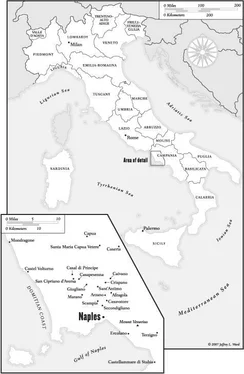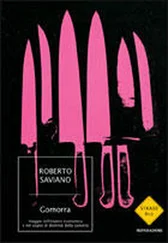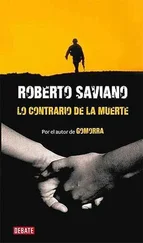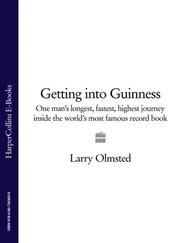Roberto Saviano - Gomorrah - A Personal Journey into the Violent International Empire of Naples’ Organized Crime System
Здесь есть возможность читать онлайн «Roberto Saviano - Gomorrah - A Personal Journey into the Violent International Empire of Naples’ Organized Crime System» весь текст электронной книги совершенно бесплатно (целиком полную версию без сокращений). В некоторых случаях можно слушать аудио, скачать через торрент в формате fb2 и присутствует краткое содержание. Жанр: Старинная литература, на английском языке. Описание произведения, (предисловие) а так же отзывы посетителей доступны на портале библиотеки ЛибКат.
- Название:Gomorrah: A Personal Journey into the Violent International Empire of Naples’ Organized Crime System
- Автор:
- Жанр:
- Год:неизвестен
- ISBN:нет данных
- Рейтинг книги:5 / 5. Голосов: 1
-
Избранное:Добавить в избранное
- Отзывы:
-
Ваша оценка:
- 100
- 1
- 2
- 3
- 4
- 5
Gomorrah: A Personal Journey into the Violent International Empire of Naples’ Organized Crime System: краткое содержание, описание и аннотация
Предлагаем к чтению аннотацию, описание, краткое содержание или предисловие (зависит от того, что написал сам автор книги «Gomorrah: A Personal Journey into the Violent International Empire of Naples’ Organized Crime System»). Если вы не нашли необходимую информацию о книге — напишите в комментариях, мы постараемся отыскать её.
Gomorrah: A Personal Journey into the Violent International Empire of Naples’ Organized Crime System — читать онлайн бесплатно полную книгу (весь текст) целиком
Ниже представлен текст книги, разбитый по страницам. Система сохранения места последней прочитанной страницы, позволяет с удобством читать онлайн бесплатно книгу «Gomorrah: A Personal Journey into the Violent International Empire of Naples’ Organized Crime System», без необходимости каждый раз заново искать на чём Вы остановились. Поставьте закладку, и сможете в любой момент перейти на страницу, на которой закончили чтение.
Интервал:
Закладка:
As the pentito Carmine Schiavone tells it, the two bosses urged Antonio Bardellino to return to Italy and eliminate Mario Iovine’s brother Mimì. Mimì owned a furniture factory and was formally unconnected to the Camorra, but, the two bosses claimed, he had often acted as a police informer. To convince Bardellino, they told him that even Mario was prepared to sacrifice his brother to keep the clan’s power on solid footing. Bardellino let himself be convinced and had Mimì killed on his way to his furniture factory. Right after the ambush Cicciotto di Mezzanotte and Sandokan pressured Mario Iovine to eliminate Bardellino, saying that he had dared to kill his brother on a pretext, based only on rumor. A double cross calculated to pit one against the other. They started to organize. Bardellino’s heirs all agreed to eliminate the capo of capos, the man who, more than anyone else in Campania, had created a criminal-business power system. Bardellino was convinced to move from Santo Domingo to the Brazilian villa; they told him that Interpol was on his tail. Mario Iovine went to see him in Brazil in 1988 on the pretext of needing to put their fish flour and cocaine business in order. One afternoon Iovine— not finding his pistol in his trousers—took a mallet and bashed in Bardellino’s skull. He buried the body in a hole dug on the beach, but as it was never found, the legend was born that Antonio Bardellino was really still alive and enjoying his wealth on some South American island. Mission accomplished, Iovine immediately phoned Vincenzo De Falco to give him the news and to kick off the massacre of all the Bardellino men. Paride Salzillo, Bardellino’s nephew and his true heir in the area, was invited to a summit of all the Casalese cartel managers. Carmine Schiavone recounts that they had Salzillo sit at the head of the table, in honor of his uncle. All of a sudden, Sandokan started to strangle him while his cousin, also named Francesco Schiavone but known as Cicciariello, together with his cohorts Raffaele Diana and Giuseppe Caterino, held him by the legs and arms. Sandokan could have killed him with a gun or a knife to the stomach, the way the old bosses used to. But no. He had to do it with his hands: that’s the way the new sovereign kills the old one when he usurps the throne. Ever since 1345 when Andrew of Hungary was strangled in Aversa, the result of a conspiracy orchestrated by his wife, Queen Joan I, and the Neapolitan nobles loyal to Charles, Duke of Durazzo, who aspired to the throne, strangulation around here has been a symbol of succession, of the violent turnover of sovereignty. Sandokan had to show all the bosses that he was the heir, that, by right of viciousness, he was the new Casalesi leader.
Antonio Bardellino had created a complex system of power, and the business cells bred in his bosom would not long remain neatly within the structures he had devised. They had matured and now needed to express their power without further hierarchical limitations. This is how Sandokan Schiavone became the leader. He developed a highly efficient, family-run system. His brother Walter coordinated the firing squads, his cousin Carmine managed economic and financial affairs, his cousin Francesco was elected mayor of Casal di Principe, and another cousin, Nicola, treasurer. Important moves for local self-assertion, which is crucial in the early phases. In the first years of his rule Sandokan’s power was also solidified through strict political ties. Because of a conflict with the old Christian Democratic Party, in 1992 the clan in Casal di Principe supported the Italian Liberal Party, which experienced the biggest upswing in its history, jumping from a measly 1 to 30 percent. But all the other top-level clan members were hostile to Sandokan’s absolute leadership. In particular the De Falcos, who in addition to their business and political alliances had the police and carabinieri on their side. In 1990 there were several meetings of the Casalesi leaders. Vincenzo De Falco, nicknamed the Fugitive, was invited to one of the meetings. The bosses would have liked to eliminate him. But he didn’t show. The carabinieri arrived instead and arrested the guests. Vincenzo De Falco was killed in 1991, riddled with bullets in his car. The police found him hunched over with the stereo blasting, a tape of the singer Domenico Modugno still playing. After his death there was a rift in the Casalesi confederation. On one side the families close to Sandokan and Iovine: Zagaria, Reccia, Bidognetti, and Caterino; on the other the families close to the De Falcos: Quadrano, La Torre, Luise, Salzillo. The De Falcos responded to the murder of the Fugitive by killing Mario Iovine in Cascais, Portugal, in 1991. They showered him with bullets in a phone booth. Iovine’s death meant a green light for Sandokan Schiavone. There followed four years of wars and massacres, four years of continuous killings between the families close to Schiavone and those close to the De Falcos. Years of upheavals, of alliances, and shifting sides; there was no real solution but rather a division of territories and powers. Sandokan became the emblem of his cartel’s victory over the other families. Afterward, all his enemies reconverted into allies. Cement, drugs, rackets, transportation, waste management, commercial monopolies, and specified suppliers: under Sandokan all this was Casalesi company territory.
Cement makers, upon which every construction company depends, became a crucial weapon for the Casalesi clans. This supply system is key for putting the clans in touch with all the contractors in the area and for linking them to every possible deal. As Carmine Schiavone frequently claimed, the clans’ cement makers offered favorable prices because their ships carried not only cement but also distributed arms to Middle Eastern countries under embargo. This second level of commerce allowed them to beat out the legal prices. The Casalesi clans made money at every step of the way; they supplied cement and subcontractors, receiving bribes on big deals. These bribes were really just the beginning, since their efficient and economical companies would not work without them, and no other company could do the work for a good price and without being punished. The Schiavone family manages a turnover of 5 billion euros a year. The entire economic potential of the Casalesi cartel—consisting of real estate holdings, farms, stock, liquid assets, construction companies, sugar refineries, cement plants, usury, and drug and arms traffic—is around 30 billion euros. The Casalese Camorra has become a multipurpose company, the most dependable in Campania, players in a whole range of business activities. The amount of illegally accumulated capital often leads to subsidized credit, which allows their companies to trounce the competition through low prices or intimidation. The new Casalese Camorrista middle class has transformed extortion into a sort of additional service, the racket into participation in Camorra business. Your monthly payments fund clan operations, but they also earn you economic protection with the banks, punctual deliveries, and respect for your sales representatives. Extortion as an imposed acquisition of services. This new racket concept came to light in a 2004 investigation by the Caserta police, which ended in the arrest of eighteen people. Francesco Sandokan Schiavone, Michele Zagaria, and the Moccia clan were, at that time, the most important Campania stockholders in Cirio and Parmalat. The milk distributed first by Cirio and then by Parmalat had conquered 90 percent of the market in the Caserta region, a good part of the Naples region, all of southern Lazio, parts of the Marche, Abruzzo, and Lucania. The companies achieved this result through their close alliance with the Casalese Camorra and bribes to the clans to maintain their preeminent position. Various brands were involved, all connected to Eurolat, which in 1999 passed from Cirio, under Cragnotti’s direction, to Parmalat, then run by Calisto Tanzi.
Читать дальшеИнтервал:
Закладка:
Похожие книги на «Gomorrah: A Personal Journey into the Violent International Empire of Naples’ Organized Crime System»
Представляем Вашему вниманию похожие книги на «Gomorrah: A Personal Journey into the Violent International Empire of Naples’ Organized Crime System» списком для выбора. Мы отобрали схожую по названию и смыслу литературу в надежде предоставить читателям больше вариантов отыскать новые, интересные, ещё непрочитанные произведения.
Обсуждение, отзывы о книге «Gomorrah: A Personal Journey into the Violent International Empire of Naples’ Organized Crime System» и просто собственные мнения читателей. Оставьте ваши комментарии, напишите, что Вы думаете о произведении, его смысле или главных героях. Укажите что конкретно понравилось, а что нет, и почему Вы так считаете.












